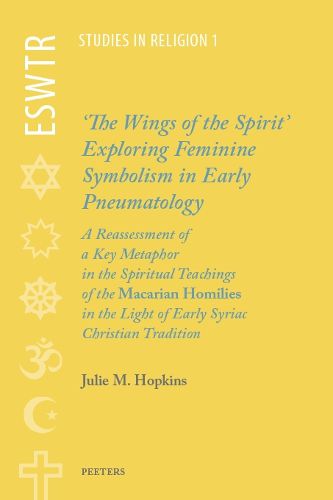Readings Newsletter
Become a Readings Member to make your shopping experience even easier.
Sign in or sign up for free!
You’re not far away from qualifying for FREE standard shipping within Australia
You’ve qualified for FREE standard shipping within Australia
The cart is loading…






The book explores the rich symbolism of the Holy Spirit as a mother bird
with hovering wings within early Syriac sacramental liturgies,
proto-monastic rites of initiation, hymnody and teaching on prayer and
spiritual states of inspiration and contemplation. The author traces
these influences into the Greek writings of the Fourth Century
Mesopotamian ascetic teacher and writer of the ‘Macarian Homilies’.
Macarian pneumatology was known to have influenced the Cappadocian
brothers, Basil and Gregory, in the period leading up to the addition of
the clause on the Holy Spirit to the Nicene Creed. By demonstrating a
cultural and religious dialogue between the Cappadocians and Macarian
and Syriac teaching on the Holy Spirit, Julie Hopkins challenges the
current scholarship which claims that the Cappadocian appropriation of
the wings of the Spirit metaphor derived from the Platonic wings of
the soul . In her study, the agency and functions of the Syriac feminine
Holy Spirit were appropriated by Gregory of Nyssa in his mystical
writings as a powerful verbal ikon, even though the gender was lost in
translation.
$9.00 standard shipping within Australia
FREE standard shipping within Australia for orders over $100.00
Express & International shipping calculated at checkout
The book explores the rich symbolism of the Holy Spirit as a mother bird
with hovering wings within early Syriac sacramental liturgies,
proto-monastic rites of initiation, hymnody and teaching on prayer and
spiritual states of inspiration and contemplation. The author traces
these influences into the Greek writings of the Fourth Century
Mesopotamian ascetic teacher and writer of the ‘Macarian Homilies’.
Macarian pneumatology was known to have influenced the Cappadocian
brothers, Basil and Gregory, in the period leading up to the addition of
the clause on the Holy Spirit to the Nicene Creed. By demonstrating a
cultural and religious dialogue between the Cappadocians and Macarian
and Syriac teaching on the Holy Spirit, Julie Hopkins challenges the
current scholarship which claims that the Cappadocian appropriation of
the wings of the Spirit metaphor derived from the Platonic wings of
the soul . In her study, the agency and functions of the Syriac feminine
Holy Spirit were appropriated by Gregory of Nyssa in his mystical
writings as a powerful verbal ikon, even though the gender was lost in
translation.